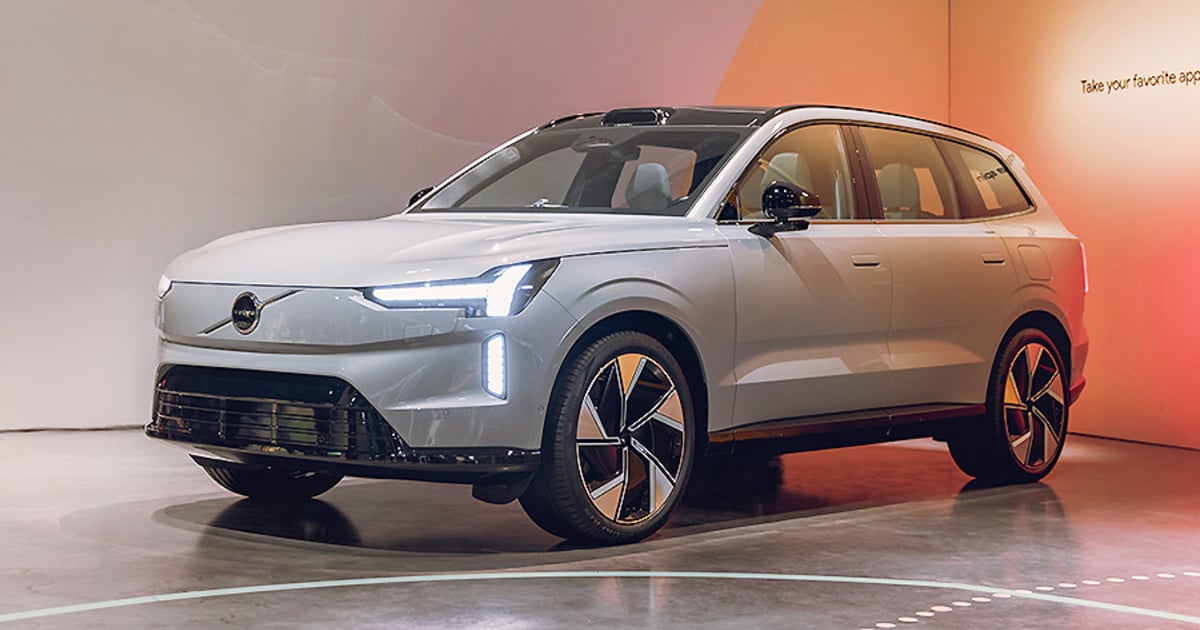
MILAN — Europe’s luxury automakers are gung-ho about an all-electric future around the world. But some are more pragmatic than others about when they’ll get there.
Mercedes-Benz has set a target to go zero-emission by next decade’s turn, but it has left the door open for continued combustion sales in markets that might not be ready to switch.
BMW is playing it safer — spreading its bets across gasoline, battery and hydrogen platforms while waiting to see how demand shakes out.
But there’s no hemming and hawing from Swedish premium brand Volvo Cars.
“Volvo will not sell a single car that is not full-electric after 2030, regardless of market,” the brand’s chief commercial officer, Björn Annwall, said on the sidelines of a launch event here for its newest EV.
“There’s no ifs, no buts.”
But that all-in strategy could cost Volvo sales in markets such as the United States, which remains skeptical of battery-powered vehicles because of range anxiety and inadequate charging infrastructure.
Last year, EVs accounted for just 5.8 percent of new-car sales in the U.S., according to Guidehouse Insights. The consulting firm expects that share to grow to at least 27 percent by 2030.
“There might be a few markets where we lose a little bit of sales,” Annwall conceded. But focusing financial and human resources on a single powertrain technology gives Volvo the best shot at producing the most compelling EV products, he said.
“We would give up a lot of growth if we didn’t focus on battery” vehicles, Annwall said. “Last time I looked, that’s a very strong growing market, and ICE is a shrinking market.”
“To be successful, you should focus on the growing part of the market.”
Volvo Cars CEO Jim Rowan said the automaker is going all in on the future rather than throwing money at “old technology.”
“Would you invest in an internal combustion engine in 2029?” Rowan said. “Maybe we sacrifice a little bit [in sales], but I think we gain a lot more than we sacrifice.”
The CEO is bullish on EV adoption as the “friction factors” of cost, charging infrastructure and charging speed are addressed.
“Last year, electrification grew by 60 percent, albeit from a lower base. ICE fell by about 13 percent. PHEV grew by about 8 percent,” Rowan said.
Volvo’s singular focus on EVs shows up in the automaker’s product road map. Last year, Volvo showed dealers its plan to introduce five new and redesigned EVs over the next few years.
On Wednesday, Volvo debuted its newest EV — an affordably priced performance crossover, the EX30. It is the smallest and fastest accelerating Volvo yet.
The EX30 threatens to disrupt the luxury electric compact crossover segment with its sub-$35,000 sticker price, not including shipping. The model’s performance variant can sprint from zero to 60 miles in 3.4 seconds, while the long-range version can go up to 275 miles on a single charge.
The EX30 “is our next step into electrification,” Volvo Car USA CEO Michael Cottone said.
But Volvo isn’t putting its ICE models on ice just yet.
The brand’s lineup of mild and plug-in hybrids will stick around to satisfy customers not quite ready to shift to full battery power.
“Our advantage vis-a-vis our premium competitors is we have a tight lineup — six, seven cars — whereas our competitors have 20 or 30 cars,” Annwall said. “[That allows] us, during the transition period, to temporarily broaden the portfolio” by continuing to sell existing combustion engine variants alongside new battery-powered variants, he said.
The ICE models “will get a bit of love,” Annwall said. “But we’re not investing in their base technology. There is no deep R&D. But we can upgrade infotainment, software [and] some exterior, interior design.”
Douglas A. Bolduc contributed to this article.

